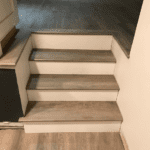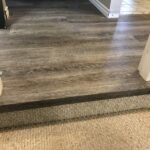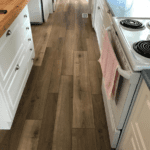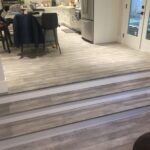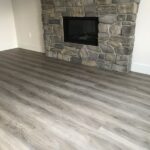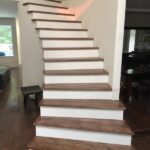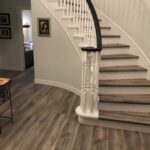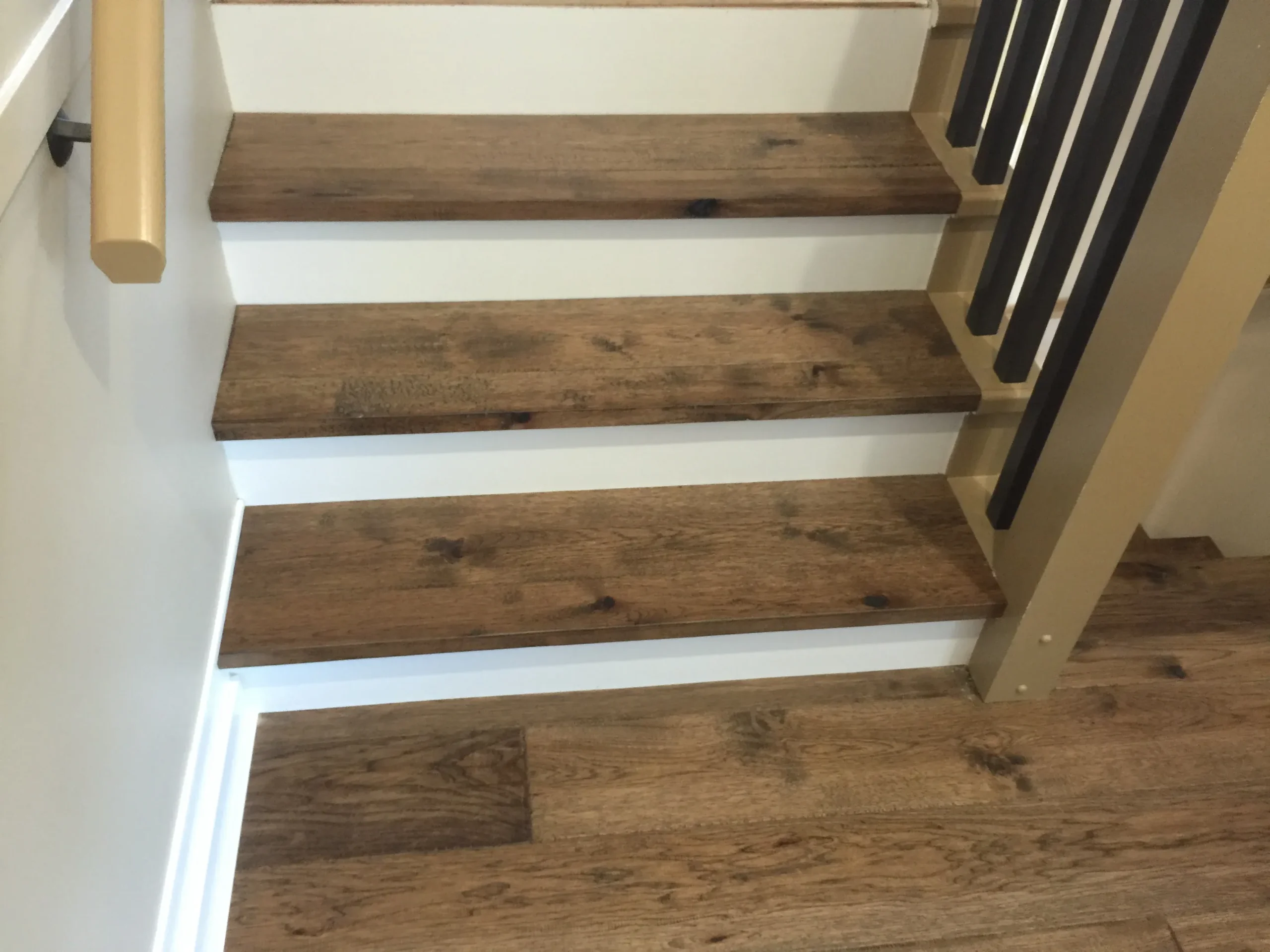Welcome to the world of elegant wood stairs, where craftsmanship meets design to transform the heart of your home. Wood stairs are more than just a means to ascend from one level to another; they are an integral element of your home’s aesthetic and functionality.
At Origin Wide Plank, we understand the profound significance of wood stairs in elevating your home’s ambiance. Join us on this journey as we explore the myriad design ideas and installation tips to help you transform your space with the elegance of wood stairs. Let’s embark on this enriching journey of home design together.
Choosing the Right Wood for Your Stairs
When it comes to enhancing your home with stylish wood stairs, one of the crucial decisions you’ll make is choosing the right type of wood. The choice of wood not only affects the aesthetics of your staircase but also its durability and overall feel. Let’s dive into the world of different wood options for stairs and explore the pros and cons of each, while also discussing how to seamlessly match the wood to your home’s style.
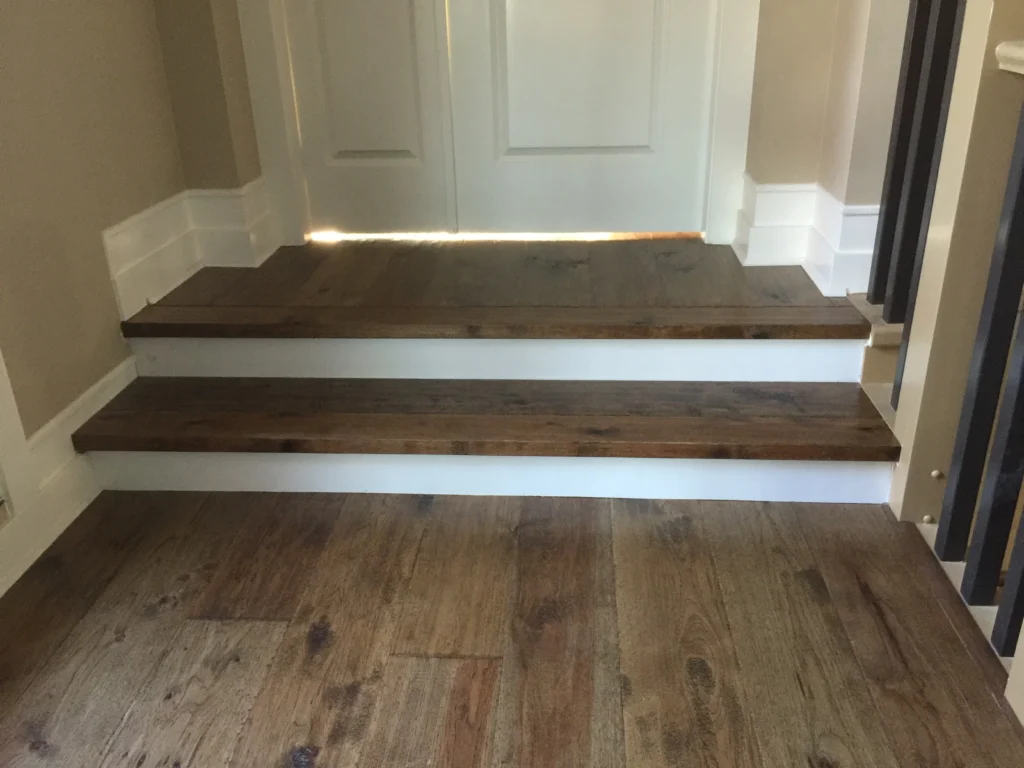
Oak
Pros:
- Widely available and versatile.
- Durable and resistant to wear and tear.
- Beautiful grain patterns that can be stained to match various aesthetics.
Cons:
- Relatively common, so it may lack uniqueness.
- Can be heavy, making installation more challenging.
Maple
Pros:
- Hard and durable, making it an excellent choice for high-traffic areas.
- Light, subtle grain patterns that can complement various interior styles.
- Accepts staining and finishing well.
Cons:
- Typically more expensive than some other options.
- May require professional installation due to its hardness.
Cherry
Pros:
- Known for its rich, reddish-brown color.
- Ages beautifully, deepening in color over time.
- Adds warmth and elegance to any space.
Cons:
- Prone to scratches and dents.
- Requires regular maintenance to preserve its luster.
Walnut
Pros:
- Dark, sophisticated appearance.
- Unique, bold grain patterns.
- Resistant to moisture, making it ideal for various environments.
Cons:
- Can be costly.
- Sensitive to light, which can lead to color changes over time.
Exotic Woods (e.g., Brazilian Cherry, Mahogany)
Pros:
- Uniqueness and exotic aesthetics.
- Excellent durability.
- Ideal for making a design statement.
Cons:
- Can be expensive and harder to source.
- May not be as readily available as domestic woods.
How to Match Wood to Your Home’s Style
To create a harmonious look in your home, it’s crucial to match the wood of your stairs with your existing interior style. Here are some tips:
Traditional Homes: Opt for classic woods like oak or maple for a timeless, elegant look.
Modern and Minimalist Spaces: Consider sleek, light woods like maple for a clean and contemporary appearance.
Rustic or Country Style: Embrace the warmth of cherry or walnut for a cozy, inviting feel.
Exotic and Unique Aesthetics: Explore the world of exotic woods to make a bold design statement.
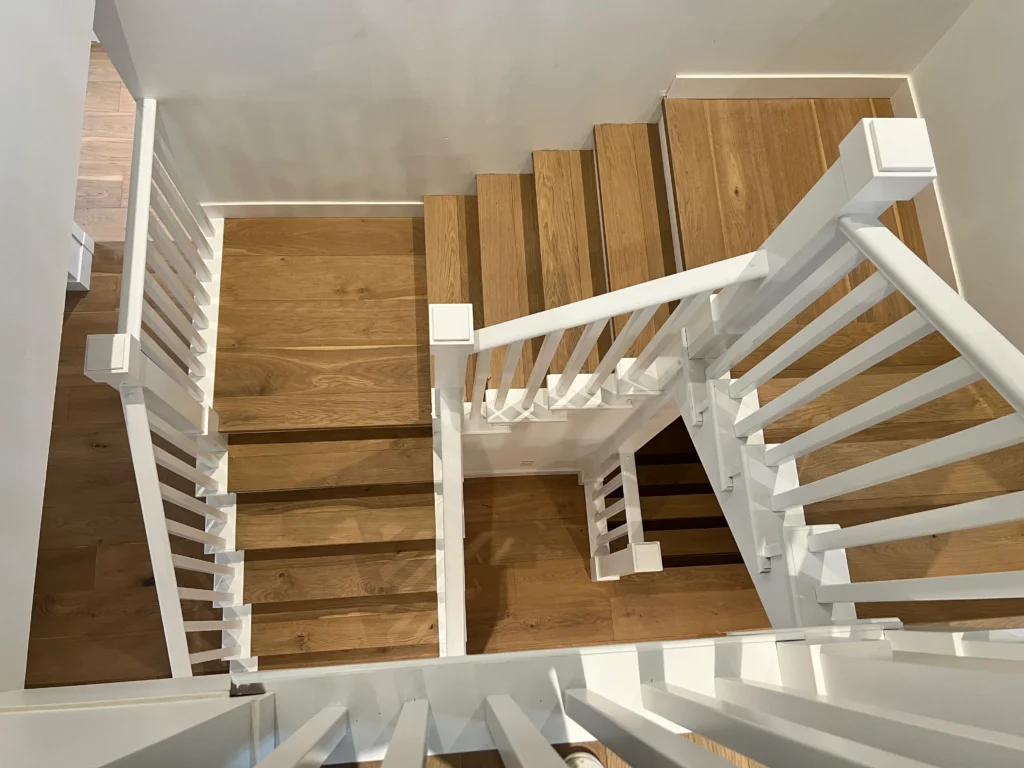
Stylish Stair Designs
When it comes to enhancing your home with wood stairs, the design is at the heart of the transformation. Your choice of wood stair design can dramatically impact the overall aesthetic of your living space.
Classic Stair Designs
Timeless Elegance: Classic designs often feature traditional, ornate details with finely crafted balusters and handrails.
Materials: Commonly built using oak, cherry, or mahogany for a rich, warm feel.
Suitable Styles: Ideal for traditional and transitional homes, adding a touch of nostalgia and sophistication.
Contemporary Stair Designs
Sleek Simplicity: Contemporary designs embrace clean lines, minimalism, and a focus on functionality.
Materials: Lighter woods like maple or the bold statement of exotic woods.
Suitable Styles: Perfect for modern and minimalist interiors, creating a sense of space and openness.
Spiral Stairs
Space Efficiency: Ideal for compact spaces, utilizing a smaller footprint.
Design Freedom: Allows for creative and unique configurations.
Materials: Typically feature metal or wood, depending on the desired aesthetic.
Straight Stairs
Simplicity: Classic and straightforward design, fitting seamlessly into most home layouts.
Materials: Versatile and can be built with a variety of wood types to match the interior.
Curved Stairs
Elegance: Create a sweeping, graceful focal point in your home.
Materials: Often crafted from beautiful, rich woods like walnut or cherry to highlight the curves.
Baluster and Handrail Designs
The balusters and handrails of your wood stairs are like the finishing touches of a masterpiece. Here are some popular designs:
Traditional Balusters: Timeless and ornate, these add a touch of classic elegance.
Modern Balusters: Sleek and simple lines, enhancing a contemporary look.
Custom Balusters: Express your unique style with customized designs.
Handrail Varieties: Consider straight or curved handrails based on the stair shape and your preferences.
Planning Your Staircase
Before you embark on the journey of adding wood stairs to your home, a well-thought-out plan is essential. In this section, we’ll guide you through the critical aspects of planning your wood staircase.
Measuring and Assessing Your Space
To ensure that your wood staircase fits seamlessly into your home, start by measuring and assessing your space. Here’s what you need to consider:
Dimensions: Measure the available space carefully, including the height, width, and depth for the stairs.
Layout: Consider the layout of your home and how the staircase will flow within it.
Traffic Flow: Evaluate how foot traffic moves in your home to determine the best placement for the stairs.
Safety: Ensure that the design complies with safety regulations and codes.
Budget Considerations
Determining your budget is a vital part of planning your wood staircase. Keep these factors in mind:
Materials: The type of wood and other materials used can significantly impact the cost.
Labor: Professional installation may come at a higher cost but guarantees quality work.
Design Complexity: Elaborate designs, curves, and customizations can increase costs.
Maintenance: Consider long-term maintenance costs to preserve the staircase’s beauty.
Working with a Professional Designer
Enlisting the help of a professional designer can make a substantial difference in your wood staircase project:
Expertise: Designers have the knowledge and experience to create a staircase that not only looks good but also functions well.
Creativity: They can offer unique design ideas that align with your home’s style.
Regulations: Designers are well-versed in safety codes and regulations, ensuring your staircase is both beautiful and safe.
Customization Options at Origin Wide Plank
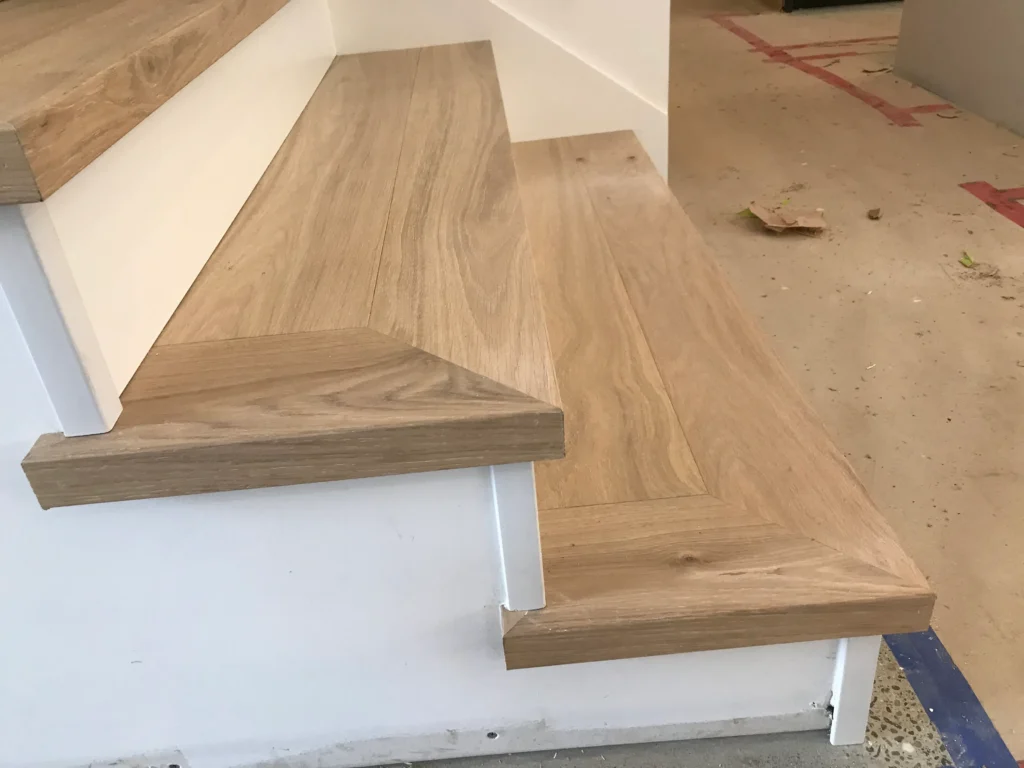
At Origin Wide Plank, we understand that every home is unique, and your wood staircase should be a reflection of your individuality. That’s why we offer a range of customization options to bring your vision to life:
Wood Selection: Choose from our exquisite selection of wood types, each with its unique character and appearance.
Stain and Finish: Personalize the look with custom staining and finishing options to match your interior.
Baluster and Handrail: Select from a variety of baluster and handrail designs, or work with our experts to create a custom look.
Carving and Inlay: Add intricate carving or inlay details to make your staircase a true work of art.
DIY vs. Professional Installation
As you embark on the journey of enhancing your home with stylish wood stairs, one of the key decisions you’ll face is whether to go the DIY route or hire a professional for the installation.
Pros of DIY Installation
Cost Savings: DIY can be budget-friendly as it eliminates labor costs.
Satisfaction: A sense of achievement and pride in completing the project yourself.
Customization: You have full control over design and installation timelines.
Cons of DIY Installation
Complexity: Wood stair installation can be intricate, requiring specialized tools and skills.
Time-Consuming: DIY projects often take longer to complete, potentially disrupting your daily life.
Risk of Errors: Inaccuracies can lead to safety hazards or a less-than-perfect final result.
Why Hiring a Professional is Often the Better Choice
While DIY installations have their merits, there are compelling reasons why hiring a professional is often the superior choice:
Expertise and Experience
Precision: Professionals bring years of experience to ensure accurate measurements, cutting, and installation.
Code Compliance: They are well-versed in local building codes and safety regulations.
Time Efficiency
Swift Completion: Professionals work efficiently, reducing the disruption to your daily routine.
Quality Assurance: Faster completion often leads to a higher-quality result.
Safety
Risk Mitigation: Professionals minimize the chances of accidents and safety issues.
Peace of Mind: Knowing that your wood stairs are installed correctly provides peace of mind.
High-Quality Finish
Attention to Detail: Professionals pay close attention to the finishing touches, ensuring a beautiful end result.
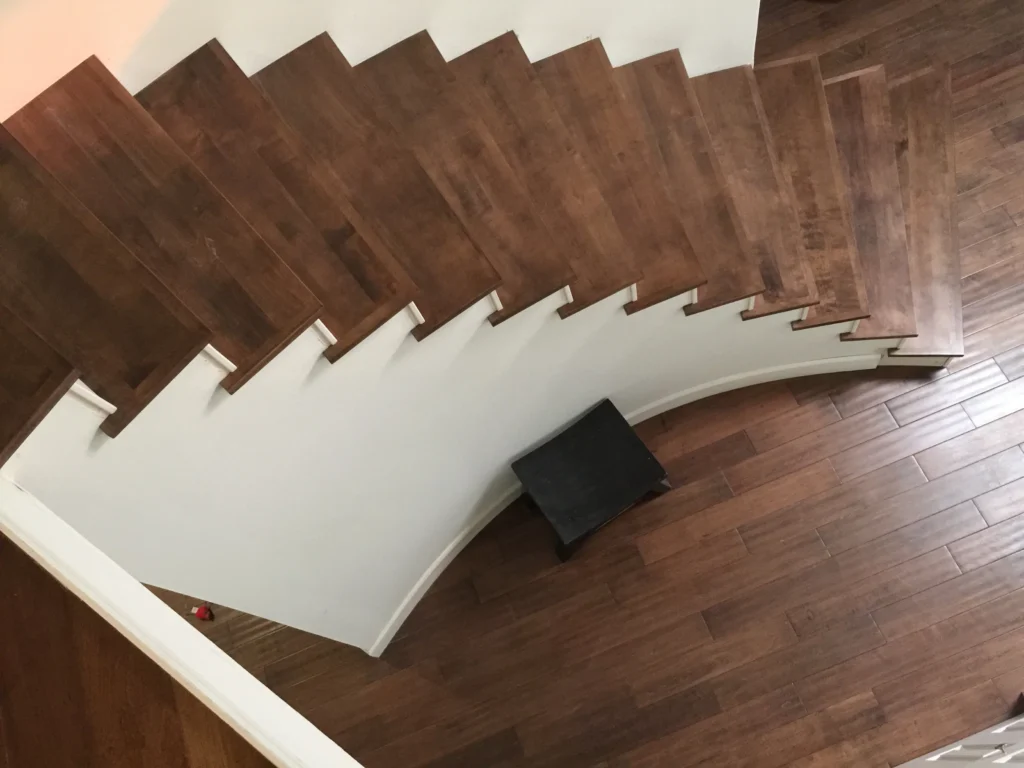
Longevity: A professionally installed staircase is likely to last longer, adding to your home’s value.
Cleaning and Maintenance Tips
Regular cleaning and maintenance play a crucial role in prolonging the life and beauty of your wood stairs. Here are some practical tips:
Sweep Regularly: Remove dirt, dust, and debris using a soft-bristle broom or a vacuum with a brush attachment.
Avoid Excess Moisture: Wood is sensitive to moisture, so wipe up spills promptly and avoid wet mopping.
Gentle Cleaning: Use a damp cloth or a wood-specific cleaner for periodic cleaning.
Protect from Scratches: Place mats or rugs in high-traffic areas and attach felt protectors to furniture legs.
Inspect for Damage: Regularly check for loose parts, splinters, or any signs of wear and tear.
How to Preserve the Wood’s Beauty
Preserving the natural beauty of your wood stairs is a rewarding endeavor. Here’s how you can achieve it:
Regular Polishing: Apply a wood-specific polish to maintain the luster and finish of the wood.
Sunlight Protection: Shield your wood stairs from direct sunlight to prevent fading.
Address Scratches Promptly: For minor scratches, use touch-up kits. For deeper damage, consult a professional.
Re-Staining or Refinishing: Over time, consider re-staining or refinishing to restore the original appearance.
Conclusion
In summary, we’ve explored the elegance of wood stairs, their value in home design, and the services offered by Origin Wide Plank. We invite you to discover our wood stair offerings and share your thoughts and questions. Your input is important to us as we celebrate the beauty of wood stairs in enhancing homes.


